|
the year 2018 is coming to an end, we are in Tonga on Fofoa Island and prepare for the cyclone season.
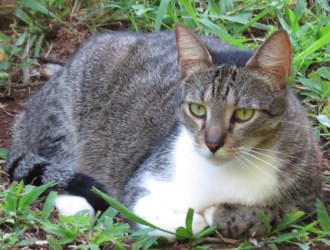 Christmas Eve 2017 we celebrated all by ourselves, on Christmas Day we were invited by our Tongan family in Hunga for church visit and a Tongan feast. The year 2018 we welcomed alone with the animals, since all the neighbors were still away. In January, Werner climbed high up in our trees and we harvested a lot of avocados and mangoes. We processed most of the mangoes into jam or preserves. Christmas Eve 2017 we celebrated all by ourselves, on Christmas Day we were invited by our Tongan family in Hunga for church visit and a Tongan feast. The year 2018 we welcomed alone with the animals, since all the neighbors were still away. In January, Werner climbed high up in our trees and we harvested a lot of avocados and mangoes. We processed most of the mangoes into jam or preserves.
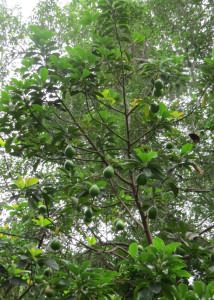 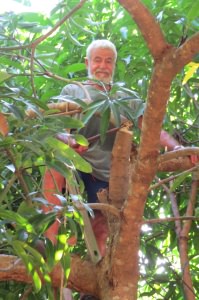 
The breadfruit tree was abundant in fruit and our vines produced large berries this year, but only a few, so we cannot produce our own wine ;-)
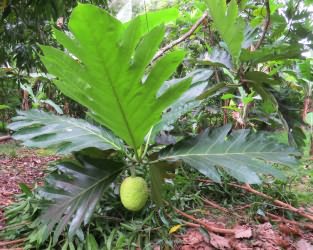 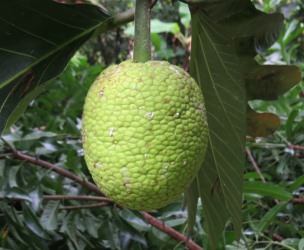 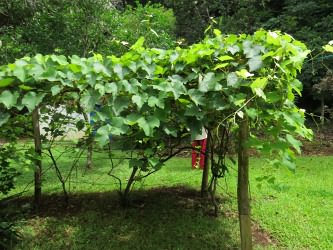 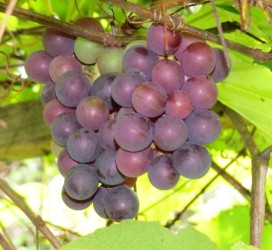
In February, we received an email from the German television station ARD, which produces the program "Verrückt nach Meer" ("Crazy for the sea"). They asked, if they could shoot some scenes with us on our property when the cruise ship ARTANIA visits Vava'u. At first we refused, but they were persistent and when we were able to watch one of their films, we agreed. On March 5, the ARTANIA entered Vava'u waters and anchored at the entrance to Neiafu. Neighbor Boris helped to pick up the film crew and protagonists with his open boat in Neiafu. Werner went along and the first shots were filmed in Neiafu at the harbor and in the old cemetery, where there are still tombstones with German inscriptions. After a wet ride they landed at our beach. Unfortunately, it was mostly cloudy that very day and raining now and then. For a few hours, the camera man, sound engineer and director filmed how the protagonists, Anne and Tobi, a couple from the ship, visited us and explored our garden. After a snack, Boris drove them back to Neiafu. This episode (Season 8, Number 301) will air on January 2, 2019 at 16:10 on the German TV station ARD, titled: Verrückt nach Meer - Der Hummerkönig von Tonga (Crazy for the Sea - The Lobster King of Tonga).
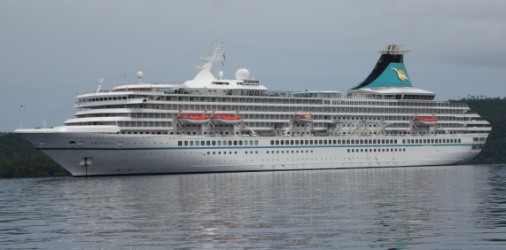 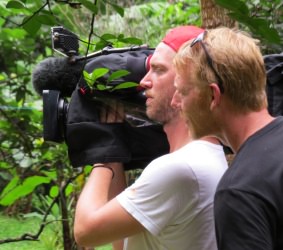 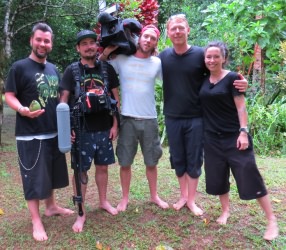
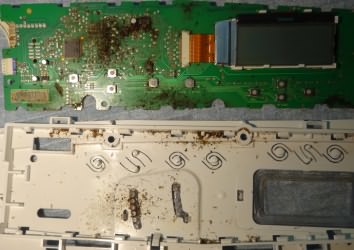 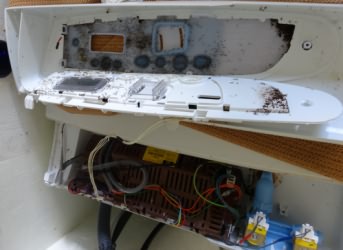 A few days later I wanted to do some laundry but the washing machine did not work. As I inspected it, I noticed a lot of ants running around on the back of the machine. I unscrewed the cover of the control electronics and found a big ants nest with eggs and a lot of dirt on the board. Carefully, I disassembled everything and cleaned the board with cotton swabs and alcohol of all the dirt and formic acid. Afterwards, the machine started, but after 9 minutes I heard three sharp bangs, then the machine stopped. Once again, I removed and opened the control panel, but could not detect any damage, then I disassembled the engine electronics and discovered burst capacitors and damaged mosfets which I could not repair. After some internet research, I found out that the producers Fisher and Paykel in New Zealand do not repair the boards, you can only buy complete new replacement sets from them. Since we wanted to fly to Germany anyway soon, I made sure that I could get the parts delivered on our return journey via New Zealand. A few days later I wanted to do some laundry but the washing machine did not work. As I inspected it, I noticed a lot of ants running around on the back of the machine. I unscrewed the cover of the control electronics and found a big ants nest with eggs and a lot of dirt on the board. Carefully, I disassembled everything and cleaned the board with cotton swabs and alcohol of all the dirt and formic acid. Afterwards, the machine started, but after 9 minutes I heard three sharp bangs, then the machine stopped. Once again, I removed and opened the control panel, but could not detect any damage, then I disassembled the engine electronics and discovered burst capacitors and damaged mosfets which I could not repair. After some internet research, I found out that the producers Fisher and Paykel in New Zealand do not repair the boards, you can only buy complete new replacement sets from them. Since we wanted to fly to Germany anyway soon, I made sure that I could get the parts delivered on our return journey via New Zealand.
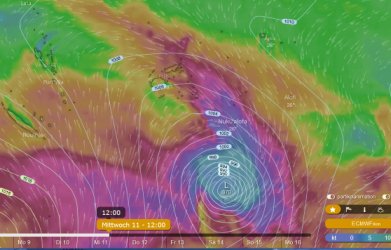 At the end of March, we pulled the boat out of the water and prepared for our departure from Vava'u on Wednesday 11th. The first week of April we had a lot of heavy wind and rain and on the weekend before we left, a cyclone (hurricane) was approaching, supposed to hit Tonga on Tuesday or Wednesday. We had thought with such a late departure there would be no danger anymore, but the weather is going crazy worldwide. In a cyclone, of course, the entire air traffic is cancelled in Tonga. We decided to go to Neiafu early on Monday and try to reschedule the flight to Nuku'alofa for Monday or Tuesday. Boris also had to go to town on Monday morning and we could hitch a ride with him. We went with the open blue boat and it was a wet ride in swimsuit and raincoat, the luggage somewhat protected by large plastic bags and tarpaulins. In Neiafu at the airline's office they said, "today and tomorrow everything is fully booked." I plead and begged with the reason that we have expensive international connecting flights, but the lady at the counter was stubborn. I did not give in and asked to speak to the manager. She phoned the main office in Nuku'alofa and said he was in session but would call me back. I made her to give me his number and when I had not heard from him an hour later, I called myself. The manager also told me that all planes were fully booked as some other people wanted to fly earlier. He promised me, he would see what he could do. I gave him no rest and called again and again, pointed out our connecting flights. Finally in the evening he phoned, that he had found two empty seats on the last plane on Tuesday afternoon. At the end of March, we pulled the boat out of the water and prepared for our departure from Vava'u on Wednesday 11th. The first week of April we had a lot of heavy wind and rain and on the weekend before we left, a cyclone (hurricane) was approaching, supposed to hit Tonga on Tuesday or Wednesday. We had thought with such a late departure there would be no danger anymore, but the weather is going crazy worldwide. In a cyclone, of course, the entire air traffic is cancelled in Tonga. We decided to go to Neiafu early on Monday and try to reschedule the flight to Nuku'alofa for Monday or Tuesday. Boris also had to go to town on Monday morning and we could hitch a ride with him. We went with the open blue boat and it was a wet ride in swimsuit and raincoat, the luggage somewhat protected by large plastic bags and tarpaulins. In Neiafu at the airline's office they said, "today and tomorrow everything is fully booked." I plead and begged with the reason that we have expensive international connecting flights, but the lady at the counter was stubborn. I did not give in and asked to speak to the manager. She phoned the main office in Nuku'alofa and said he was in session but would call me back. I made her to give me his number and when I had not heard from him an hour later, I called myself. The manager also told me that all planes were fully booked as some other people wanted to fly earlier. He promised me, he would see what he could do. I gave him no rest and called again and again, pointed out our connecting flights. Finally in the evening he phoned, that he had found two empty seats on the last plane on Tuesday afternoon.
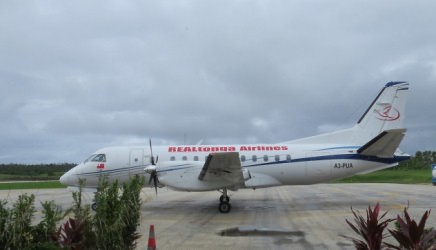 
The night we stayed with a friend and were at the airport early. We were very surprised that on our flight just 12 of the 30 seats were occupied. When we arrived in Nuku'alofa shortly before 6 pm after a turbulent flight through thick black clouds, it was already raining hard. Our plane was the last to land, even international flights with large planes coming from Fiji or Auckland had been cancelled. Already at the airport we saw some of the damage caused by the last cyclone GITA a few weeks ago. Fortunately for us, this cyclone had made a loop around Vava'u and then hit Nuku'alofa hard.

We went by taxi to find accommodation near the airport, an insider tip was the newly opened guest house Aloft. When we asked there, everything was fully booked, but the lady manager felt sorry for us and probably did not expect that the couple, who should arrive later from Fiji, really would come. We got a good room in the basement and had nice contact with the family and the long term tenants. Wind and rain were steadily increasing, but we were safe and dry. Our flight from Nuku'alofa to Auckland was scheduled to depart the next day, Wednesday at 14:40, the connecting flight to Beijing on Thursday at 19:30. For the following night we had booked a room in Auckland. Late next morning we were ready to go to the airport, when the first Air New Zealand report came in, that the flight was delayed. From hour to hour we were put off, in the evening we could move into our room again. We were puzzled because the wind in Nuku'alofa was not that strong anymore. Later, we saw on television that a heavy storm raged directly over Auckland, uprooting trees, uncovering roofs and causing flight cancellations. It was only after midnight that the plane arrived and it departed long after 1 am, 11 hours later than planned. At about six in the morning, we finally arrived at the Auckland Airport Kiwi Motel, which kindly allowed us to use the room instead of until 10am to noon. We were glad that we made it to New Zealand in time and were able to start our flight to Beijing as planned in the evening.
Pretty tired we got off the old Air China plane at 04:30 the next morning inBeijing,the capital of CHINA. Beijing (Chinese 北京市 - 39°55′N 116°23′E ), which means Northern Capital, as opposed to Nanjing, the former southern capital, has about 22 million inhabitants on 17,000 square kilometers and more than three thousand years of history. As early as 800,000 years ago, representatives of Homo erectus, the Peking man, lived here. During the various dynasties the city had changing names and significances. It was not until 1408 that Emperor Yongle began to rebuild the city under her new name Beijing. The Forbidden City and the Temple of Heaven were also created during this time. In 1421, Yongle named Beijing the new capital of the Ming Dynasty. Various other dynasties followed, then the Republic of China was founded in 1912 and Beijing remained the capital until 1928. Chiang Kai-shek, who fled to Taiwan in 1949 (see Report 2017), declared Nanjing as capital. Turbulent years followed, in 1937 Beijing was occupied by Japan and only freed after World War II by Kuomintang and Americans. The communists under Mao Zedong took over the city in 1949 and after the founding of the People's Republic of China on October 1, 1949 it was declared the capital again. (Wikipedia: Beijing).
 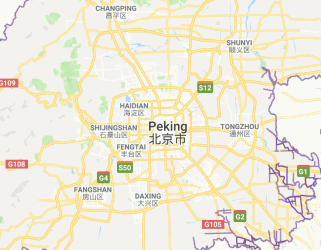 
Just as I was booking our flights, news came out, that it was now possible to travel to Beijing without any visas for up to 6 days. Arriving at Beijing airport, we followed the crowds and waited in line for a long time in front of the immigration counter, only to be sent all the way back because we had failed to get a temporary visa for our five-day stay at another counter. Tired and annoyed, after completing all formalities, we rented an overpriced taxi to get us to our Days Inn Hotel in downtown Beijing.
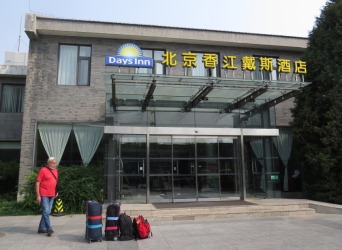 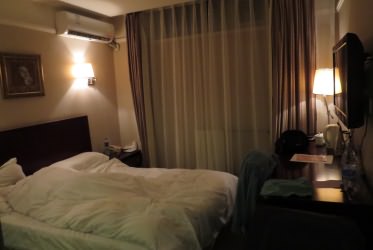 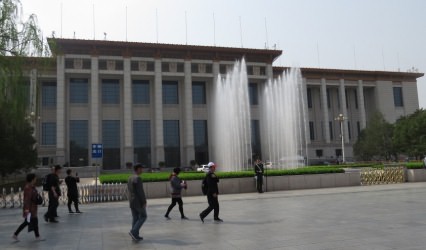
After a few hours sleep, we were fit again and used the rainy day to visit the National Museum. The Museum, the Forbidden City and Tian'anmen Square with the Mao Mausoleum lie all close together in the city center, just a few streets from our hotel, so we could walk everywhere. As we approached this inner ring near the National Theater, we were stopped by uniformed guards and had to show our passports. A little further on there was a long queue of people and we discovered that they made baggage checks here. We had a small backpack with a camera. Again, the passport had to be shown and all luggage had to be checked by X-ray. Now we were in the inner restricted area of Tian'anmen Square, where the museum is located. Also in front of the museum entrance were long lines, everywhere cameras, police and military. Finally inside the museum, there was another X-ray system for luggage and people. Werner had as always pocketed his little Swiss Army knife. This was of course discovered, and we had to turn around. Further away was a room where one could safely store such items, then we had to walk all the way back to the museum, back through the X-ray machine, then a personal body control and finally we were allowed into the museum, which charged no entrance fee that day. The museum is huge, but we did see a lot in the limited time we had left. In the evening we ate a Chinese soup in a small restaurant opposite the hotel and then fell to bed exhausted.
 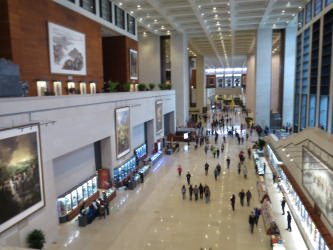 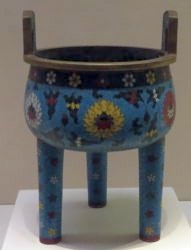 
On Saturday, the sun was shining, so we walked along the red wall to the entrance of the Forbidden City. Same procedures as the day before, only bigger crowds and longer lines, military and surveillance cameras everywhere.
  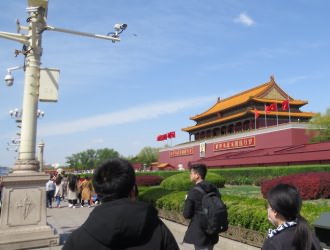 
Werner reluctantly left his beloved pocket knife in the hotel, so we weathered all controls well. The steps and outer courtyards of the Forbidden City were crowded with shuffeling people, almost all Chinese, mostly in tour groups with flag bearers, only very occasionally we saw "long-noses" like us. Everyone headed for the entrance at the next gate, so we lined up in one of the long rows, making progress very slowly. The person at the entrance counter wanted to have our passports, which were placed in a reader. We did not have a ticket! With hands and feet, they explained that we would have to pay first at a small counter on the very edge of the square. So back again and into a new queue. Finally we were able to pay for the tickets and understood that they were registered on our passport numbers. After a final queueing we were then admitted to the holy of holies.
The Forbidden City was the seat of the Chinese emperors of the Ming and Quing dynasties. Construction began in 1406 and it was inhabited by 24 emperors until the last emperor was deposed in 1905. Ordinary people had no access to the area. 9,000 rooms and halls are located in a rectangular area of 720,000 square meters. Since 1987, the Forbidden City with the Palace Museum has been a UNESCO World Heritage Site.
 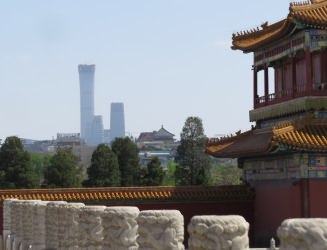  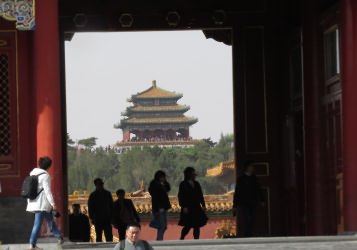
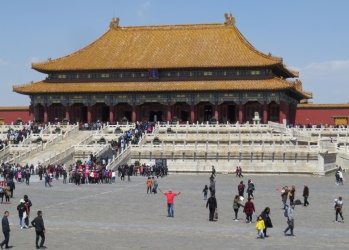
It was a very windy, cool day, the often smoggy sky bright blue. In the distance you could even see the tallest buildings in Beijing's business district. We wandered from one courtyard to the next, looking at the palaces with their yellow tiled roofs, a color reserved for the emperor only. We visited the halls and admired the thrones of the emperors. Movies that played here came to mind, we tried to imagine the restricted life behind those red walls. At the northern end of the complex is a small garden, behind the wall the artificially constructed coal mound crowned by a temple. According to Buddhist doctrine a house should have a mountain in the back and water, here a river, at the front. High red walls and a moat on the outside run around the whole quarter.
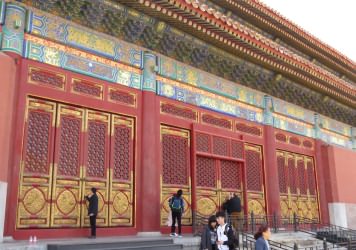  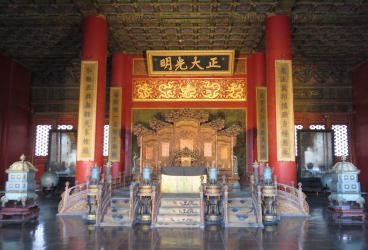 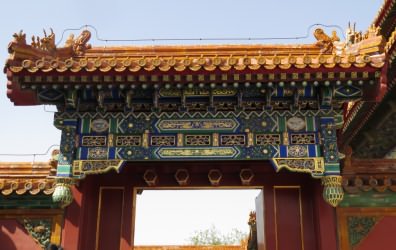 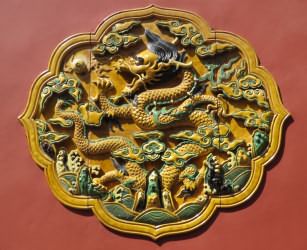 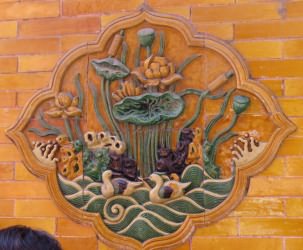
Through highly decorated gates and nested courtyards with more temples and palaces, we strolled past magnificent wall mosaics. All along the wall loyal Chinese photographed their children. In an exhibition we saw sculptures from the famous mausoleum of Qin Shi Huang Di, who was the founder of the Chinese Qin dynasty and the entire Empire. The Emperor was buried there 210 BC. The Mausoleum is one of the world's largest tombs and is best known for its large military figures, the so-called "Terracotta Army".
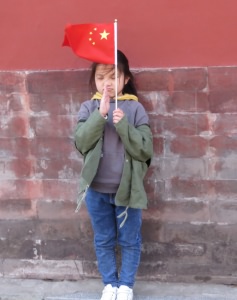  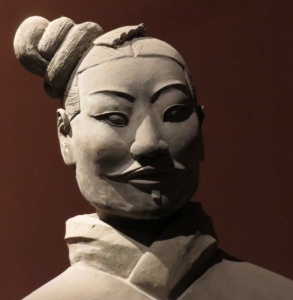
We left the Forbidden City shortly before closing time through the front side entrance, which led us to the moat that surrounds the walls. Through original residential districts and winding streets called Hutongs, we reached our hotel again. Once again I have to praise the navigation program OsmAND + on my smartphone, that leads us safely to all destinations worldwide.
In the evening we walked a few streets in the other direction to the shopping street Wangfujing, where we found an alley full of "delicacies". Hoards of bustling people, many shop stalls, food of all sorts, from baked tofu to duck, fish, crabs and fruit, to still wiggling scorpions, spiders, silkworms and centipedes, all was offered loudly, bought and eaten. We only stayed away from the creepy-crawlies, tried many other things and went back to the hotel with a pleasantly full stomach.
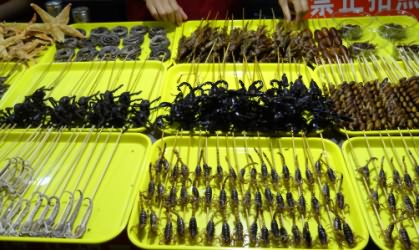  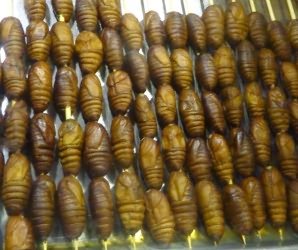
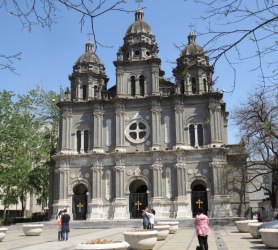
On Sunday we went on an exploration tour through the streets of the city. We were surprised to find a Catholic church, St. Joseph's Church, near a quiet corner. Later, we discovered that the original church was founded in 1653 by a Italian Jesuit missionary, Lodovico Buglio. It was one of four Catholic churches in the whole of Beijing. A group of Jesuits were the only Europeans allowed to live in Beijing because the Chinese were interested in their astronomical knowledge. The church was damaged or destroyed several times by earthquakes and fires, most recently in the Boxer Uprising in 1900. Rebuilt in 1904 and converted into a school by Mao in 1949. During the Cultural Revolution from 1966 to 1976 it was closed. In 1980, the church was restored and opened again her doors to the faithful, and in 2007 its priest Joseph Li Shan was declared archbishop of Beijing by Pope Benedict XVI.
A few streets further on lies the wide Wangfujing shopping street with its clock tower and various sculptures. State of the art shopping centers alternate with small shops. The passenger transport has changed from the rickshaw to electric vehicles.
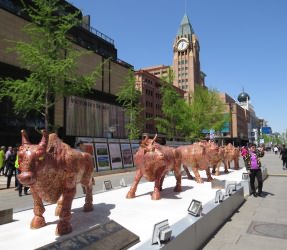 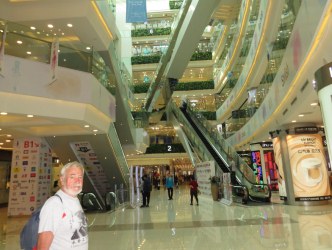 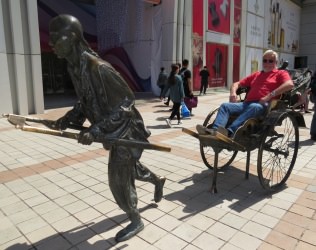 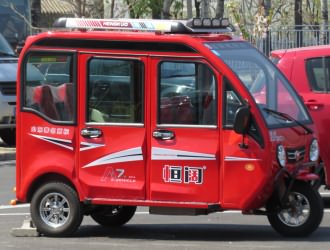
Old and young are bustling here, we saw a blind street musician with an exotic instrument and a cleaning service on wheels. In the evening, we went back into the narrow food alley, where we filled our bellies again and watched a lady perform Chinese theater.
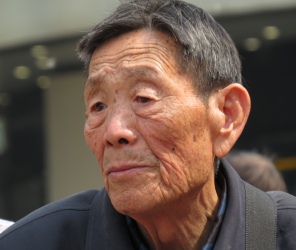 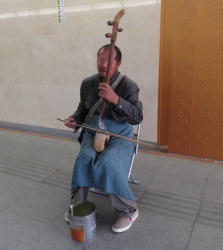 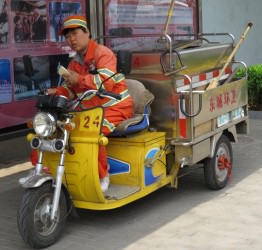 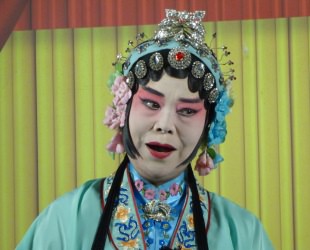
On Monday, we joined a tour with a small bus and only a few people and a nice guide to take us to the Chinese Wall. The bus headed North out of town towards the mountains. On the outskirts of Beijing, we visited a silk factory, where films and lectures explained how the silkworm is bred and then the silk thread is won and spun into silk or the threads are just pulled apart to form a thick layer of silk for a bed cover. In Korea, we had already made acquaintance with the cooked cocoons of the silkworm, which are also offered in the "Alley of Delicacies".
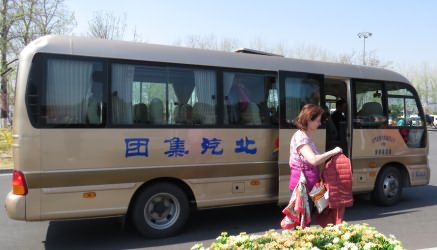 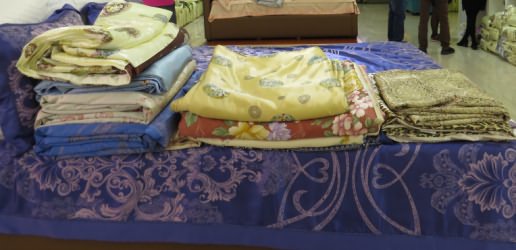
The bus continued to the Ming Tombs in the foothills of the mountains. Through a courtyard with flowering fruit trees, and through an underground passage one could climb a tower, from which you had a good all-round visibility. In this area are various tombs of the Ming Dynasty (1368-1644).
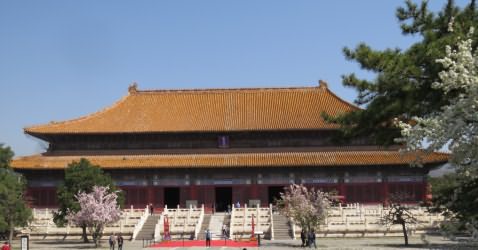 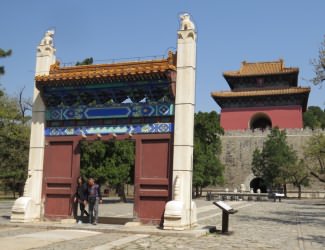 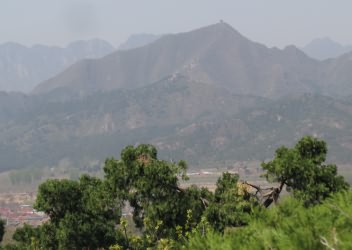
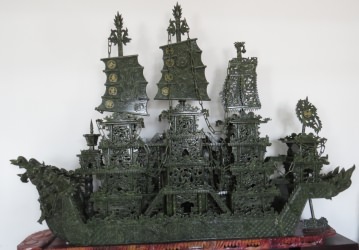
The next stop was at a jade factory. We were able to watch the jade grinders at work, especially how they made five nestled hollow balls out of a massive jade ball, all of which fit together and turn individually. Huge sculptures made of jade, as well as tiny figurines are fabricated and sold there. On the second floor above the showroom is a large dining room, where we all had lunch together, included in the price of the excursion.
 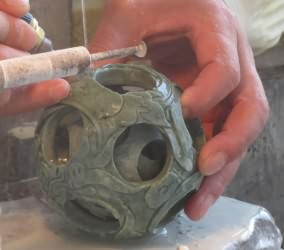  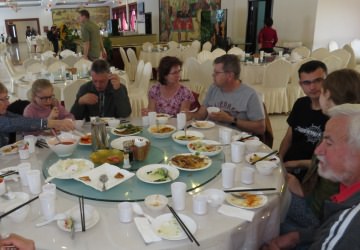
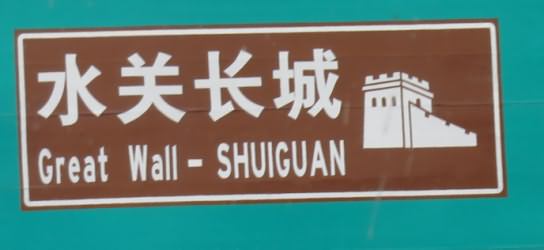
Finally we arrived at the Great Wall of China, which runs over a length of 8850 kilometers through China. Its construction was started in the 5th century BC. and continued until the 16th century. Today there are still many single sections, put together they would reach all across America.
We visited the section at Badaling, 70 kilometers north of Beijing. Most of the preserved parts were built and reinforced during the Ming Dynasty (1368 - 1644 AD) to defend Beijing against the intrusion of northern Mongolians.The total length of this section is 7.5 miles (12 kilometers) with 43 watchtowers, however only 2.3 miles (3.74 kilometers) and 19 watchtowers have been restored 1957 and opened to visitors.
In this section the wall averages about 26 feet (7.8 meters) tall, and 20 feet (6 meters) wide, which would allow five horses to gallop or ten soldiers to march abreast.
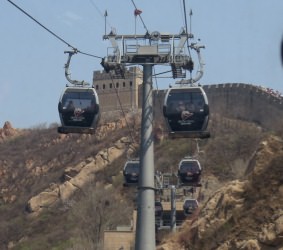 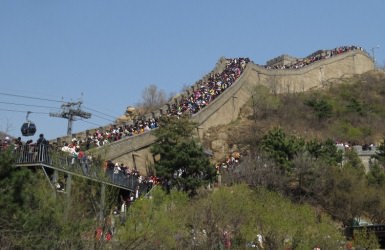
At first, as everywhere, we had to wait in line, but thanks to our guide, who bought the tickets, we progressed quickly and entered a small gondola, which brought us from the parking lot up to the wall. The first few steps we could still make fast, then we were stuck in the crowds. The upwards leading part of the wall, which is recommended by everybody and promises a beautiful view from above, was packed to the brim. No galloping horses here for sure. Body by body, people were standing on the full width and length of this section, an upward movement could only be detected in slow motion. At least some progress seemed possible on the lower section of the wall, so we turned there.
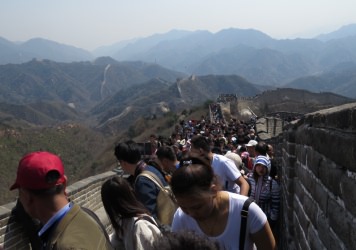  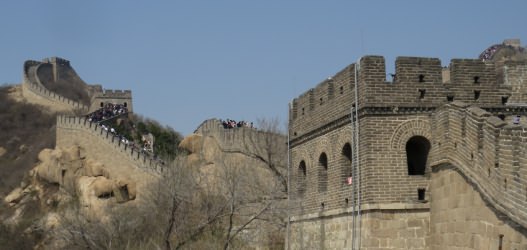
The first meters were still very tedious, then it got a little better, the farther we got away from the entrance. The view was gorgeous, it seemed to be not just one wall, but several sections that twisted up and down the ridges of the mountains like serpents. From time to time interrupted by a solid watchtower or a brick building, then far away, the wall snakes vanished in the haze. A strong wind had swept the sky bright blue again and when we looked into the distance, we could forget the crowds around us for a few moments.
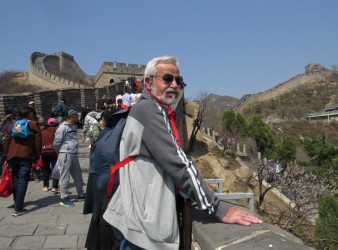  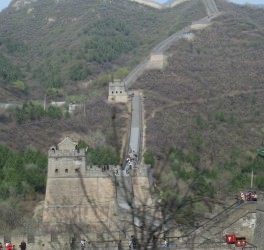 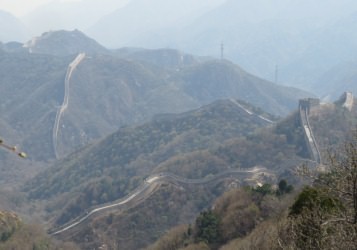
Unfortunately, we had only two hours, including cable car rides, but that was enough to get an impression of this unique wonder of the world. The bus took us safely back to the hotel and we ended the evening in the hotel restaurant with a good meal. (Small travel tip: Do not visit the Great Wall on Mondays, when the Forbidden City is closed).
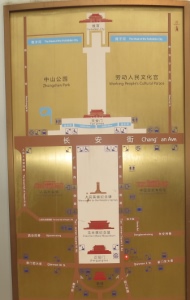 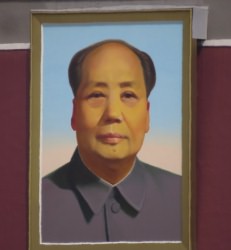
On our last day in Beijing, we visited the famous, infamous Tian'anmen Square (Square at the Gate of Heavenly Peace), where, of course, we had to go through all the controls again, watched by countless cameras. The golden street signs show the location. At the northern end of the world's largest fortified square, with 40 hectares and space for one million people, stretch the red walls of the Forbidden City with the large Mao image. To the east lies the National Museum and the new National Theater. To the west is the Great Hall of the People, the seat of the Chinese National Assembly. In the middle stands the mausoleum with the tomb of former chairman Mao Zedong (1893-1976) and the Monument to the Heroes of the People and to the south towers a large gray city gate. The Tiananmen Square has a colorful past with parades and mass rallies. On June 4, 1989, with the world watching in horror, thousands of peacefully demonstrating democracy workers and students were slaughtered here by the Chinese military.
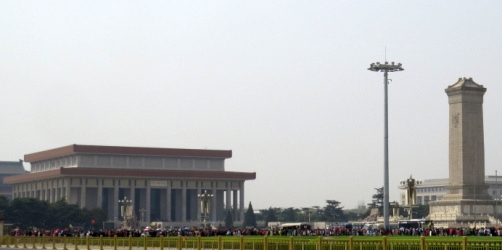  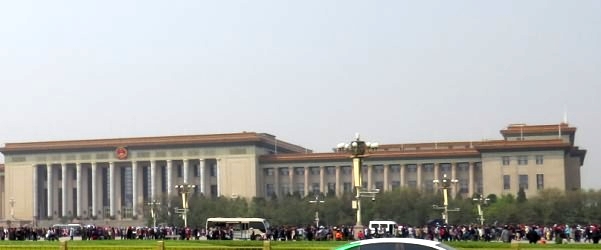
During our visit countless people moved around the square, barriers indicated where to queue to visit the MAO mausoleum. These barriers started far in front of the mausoleum, looping back and forth across the square, then past the mausoleum to the end of the square, around behind the mausoleum, and then all the way back to the front, where the entrance is. A huge crowd stood packed in these barriers, moving ever so slowly forward. We tried to figure out how many people that would be, we believe, it could have been around 20,000 people standing in that one queue. We really did not want to visit the mausoleum anymore under these conditions.
 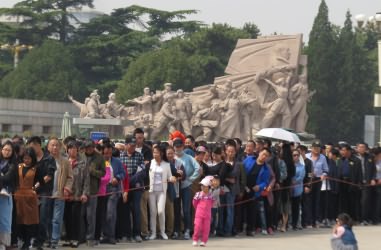 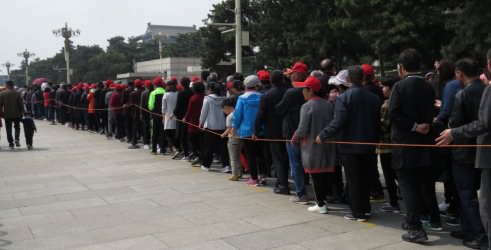 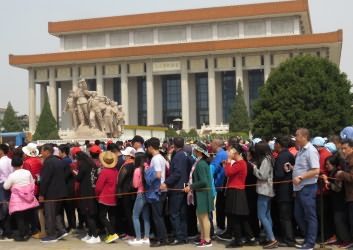  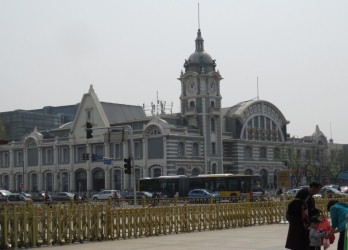
We walked along the queue to the end of the square to see the old grey city gate and behind the fence the former station building, then went down to the subway, but returned annoyed, since there were also controls. So we hiked a bit around the place and then looked for a taxi, which should take us to the Temple of Heaven, because we did not want to walk the distance of a few miles. The regular fare would have been 10-15 yuan (CNY), around 1 to 2 Dollars. We asked at least 5 different taxi drivers to drive us there, all of whom wanted to have more than twenty times the normal fare for this short distance. We refused to play their game and somewhat frustrated walked along the side streets back to the Wangfujing Street, where we did some more shopping, including vacuum packed Bejijng ducks for the loved ones at home.
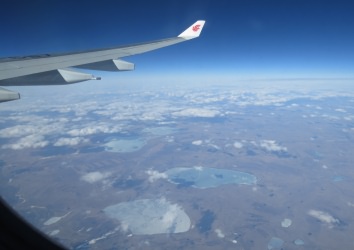 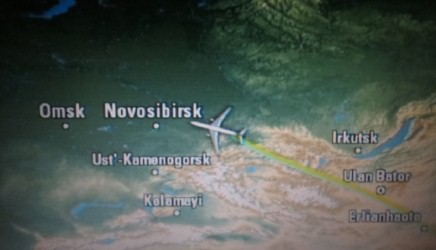 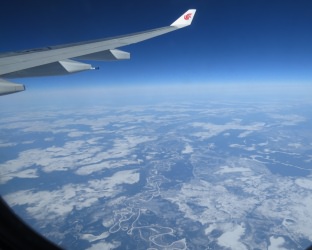
The following morning, we went to the airport in a taxi, which only charged a third of the price of the first day taxi. At 1.30 pm we were in the air, flying over icy landscapes past Ulan Bator and Novosibirsk. After almost eleven hours on the plane, but because of the time difference only at 06:45 pm, we landed in Zürich, Switzerland, where my brother Ingo picked us up and took us to our home in Wurmlingen (Germany).
Early the next morning we had the first medical appointment and that went on for the next weeks. Werner had two eye surgeries and received new lenses in both eyes because of cataracts. To our delight, the summer in Germany started already in April with 30 degrees Celsius (86 degrees Fahrenheit). In the middle of May we celebrated the 80th birthday of Werner's brother-in-law Rudi in Gütersloh, a week later with the whole family and many relatives the 75th of my cousin Joachim in Bad Liebenzell in Swabia.
 With friend Geli, we visited the 246-meter-high ThyssenKrupp Test Tower near Rottweil, which opened in 2017 and tests express lifts and high-speed elevators. Even from the plane we could recognize the high tower, one more in our collection of high buildings. It is the world's highest test tower for elevator systems and, at 232 meters, it has the highest visitor platform in Germany with a great view over Rottweil and far into Swabia. (Wikipedia in German: Test Tower) With friend Geli, we visited the 246-meter-high ThyssenKrupp Test Tower near Rottweil, which opened in 2017 and tests express lifts and high-speed elevators. Even from the plane we could recognize the high tower, one more in our collection of high buildings. It is the world's highest test tower for elevator systems and, at 232 meters, it has the highest visitor platform in Germany with a great view over Rottweil and far into Swabia. (Wikipedia in German: Test Tower)
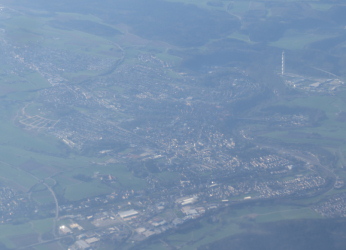 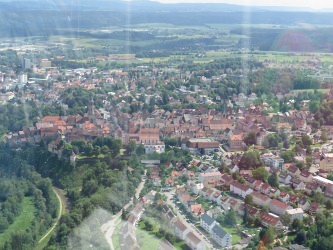 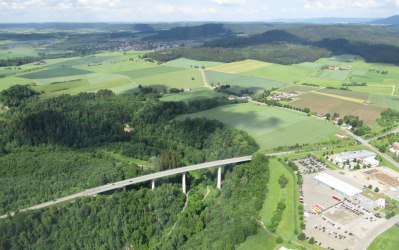
To celebrate the 100th anniversary of the club of deaf people in Tuttlingen, the club made a nice trip to the Island Mainau in the Lake of Constance. With my father and the other members we enjoyed the views in beautiful summer weather and the excellent dinner.
  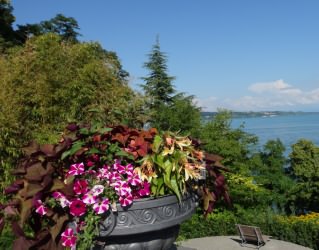
In the middle of June the Musikverein (music club) in Wurmlingen celebrated his 125th anniversary with a meeting of the surrounding music clubs and on Tuttlingen's former castle Honberg you could shop at a medieval market and marvel at a knight tournament. (Wikipedia: Tuttlingen)
 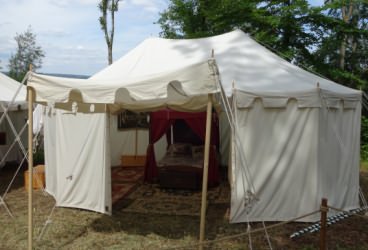 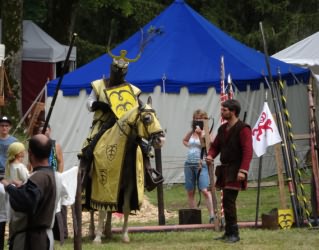
My brother's birthday party on Saturday was already our farewell party, on June 26th we boarded the Air China plane and with a last look at the Alps to starboard we flew back to China. In Beijing we had 12 hours stop-over, which we could spend for free in the lounge including 4 hours in a hotel room, where we could sleep. The last soccer game of the Germans against Korea at the 2018 World Cup was broadcast live here, so we could follow the disaster, even if the commentary was in Chinese. To our surprise a nice Chinese man in the lounge translated the incomprehensible moments into German for us.
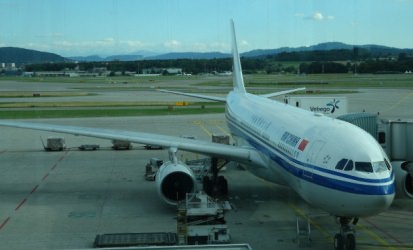 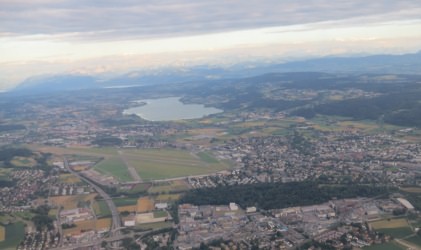
After another twelve and a half hours we landed at 5:30 pm at the airport in Auckland, New Zealand, where we wanted to pick up our booked car from Budget. After most of the formalities were done, the woman at the counter gave me the papers including a small drawing, where you can enter any existing damage after inspecting the rental car. She said that I should sign this now, everything is fine with the car. If I refuse, I will not get the keys, if necessary, I could come back in again. After discussing that a long time back and forth, unfortunately, I let myself being persuaded to sign it. The rental cars are located just behind the terminal building on a large numbered parking lot. When we left the terminal building, it was pitch black dark outside and rained lightly, we were glad to quickly find the car with all our luggage. Nevertheless, we went around the car and tried to inspect the exterior of the car in the dim light of the weak street lights. We could not see any damage and drove from the airport to the Manukau district, where we had rented a cheap room at the new Manukau City Lodge for three days. For the first two days we even got a free upgrade to a larger room and the package with the spare parts for the washing machine was already waiting for us there.
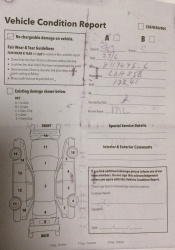 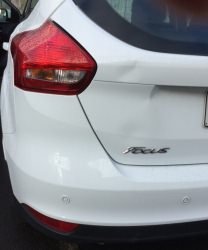
The next morning the sun was shining and as we approached the white rental car, parked in a private parking lot behind the motel right in front of our room window, we saw that at the back of the car there was a dent in the tailgate.The shape and location of the dent suggested that this could not have been made by another car or by driving backwards. I took pictures of it right away. Since we had a lot to do, we did not drive all the way back to the airport. We made our shoppings and on Monday morning we went to the airport very early. We informed the employee of Budget Rental Cars about the damage. Then we had to talk to his supervisor, who was sitting at the neighboring AVIS booth. Several times we explained what had happened and they took notes and made copies of my photos. No one wanted to go outside and see the car.
Finally it was time to check in for our flight and after three hours we were back in Tonga. We had planned to fly to Tongatapu on Monday and then take one of the ferries to Vava'u. The new fast ferry TONGIAKI normally goes from Tongatapu to Vava'u on Mondays or Tuesdays in only 8 hours. Unfortunately, this ferry had technical problems. The slow ferry Otunga 'Ofa was on an irregular trip to the Ha'apai group since early morning, because there was a church conference. So we were grounded in Nuku'alofa, because a flight with 4 heavy suitcases was out of question. We took a room in the small Lose o Vavau Ilaise Guest House that I had found when I was alone in Nuku'alofa in 2016 and started waiting for a ferry. From day to day we received contradictory messages, it looked as if we could not get away before the following week. We strolled through the city, had a look at the Royal Palace and discovered the remnants of the old parliament building, which had been totally destroyed by a cyclone. The huge new Parliament building, impressive from all sides, was at one time overshadowed by a large halo around the sun, usually a harbinger of bad weather.
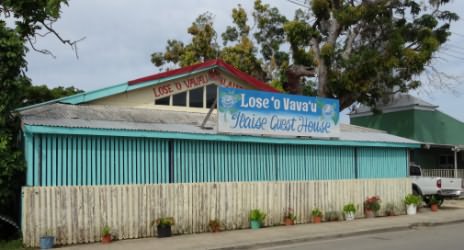 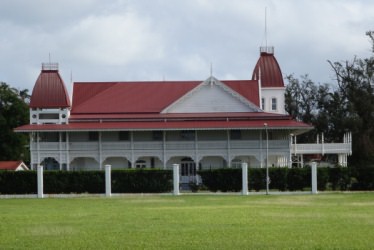 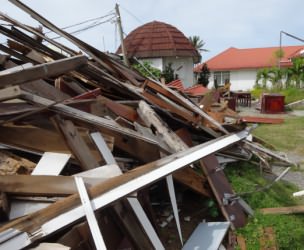 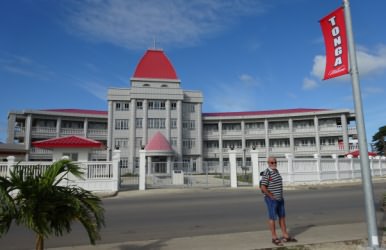 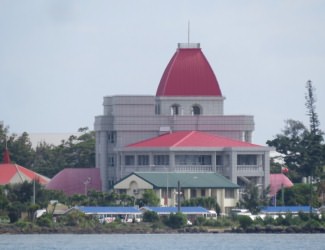 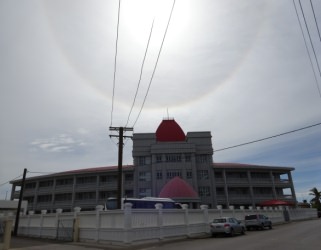 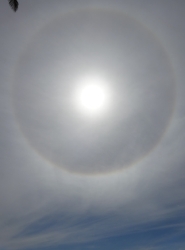
On July 4, a public holiday in honor of the king, a colourful parade marched along the street and there was some entertainment for children along the road by the sea. In the harbor we saw a blue transport boat loading goods. We asked the staff and were told, that the barge VAOMAPA would go to Vava'u the next day and take passengers, but first they would have to go to Ha'apai. We bought two tickets and left our phone number. The whole Thursday we waited, but were told again and again, the ship is not back yet, then, although it was back, the crew must first take a break. The weather had also become extremely bad, a lot of wind and rain. The planned departure at midnight was postponed again to two o'clock on Friday afternoon, which was just fine for us.
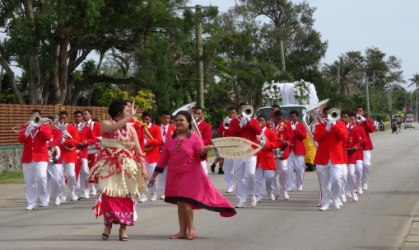 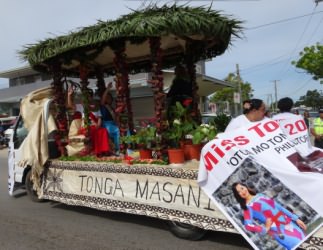 
Punctually at 2 pm the barge departed packed to the brim. She had loaded cars, huge cable drums, water tanks and wood, also many heavy wooden telegraph poles, which were lashed with chains. To our surprise we were the only passengers and were able to spread out in the two inside rooms and an outdoor deck, all equipped with benches. We were invited to the bridge by the nice captain and provided with coffee by the crew. In the dark, we stretched out on the benches, the life jackets as pillows, and slept pretty good, although the wind between Tongatapu and Ha'apai blew quite strong. The only concern I had was, that some of the tree trunks, which lay very unstable on top of each other, would be able get loose when the boat was heavily rolling. Then the chains would not hold them anymore and they could roll around. Luckily everything lasted until Vava'u, where we arrived in a rain shower. The captain himself brought our luggage ashore, where neighbor Karyn already waited with her car and took us to the house, that they had rented for the season in Neiafu. At first it looked like on this Saturday no one would have time to take us to the island, but a bit later, Ricky came back from a snorkeling trip. In his small boat he took us to Fofoa, where we arrived trenched by seawater from below and soaked by rain from above. Luckily, all the systems in the house were up and running fast, so we could take a quick hot shower and make a snack before sinking into our beds.
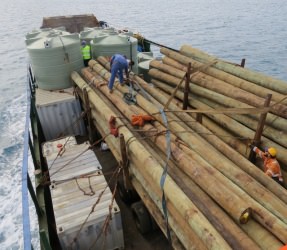 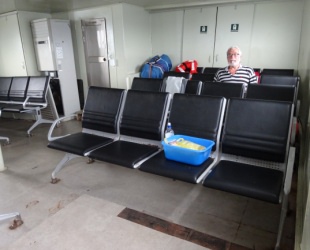 
The next few days we settled in again, then I installed the new parts in the washing machine. To our disappointment, it did not run properly and displayed an error code, another part seemed to be broken. Again, I got in touch with the company and a very dedicated technician gave me all sorts of advice, but all culminated in having to order another part. It took until the beginning of October, until someone could bring the part from New Zealand, but after its complicated installation, the machine ran like new again.
 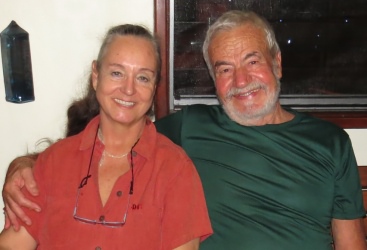 Just on my birthday in July, the car rental company Budget blamed us for the damage to the car and debited our credit card with more than 700 Euros. Apparently, our documents had never been forwarded from the airport office to Budget head quarters. We mailed them our statements and pictures and could convince them, that we were not to blame for the dent. To our relief they refunded the money. Just on my birthday in July, the car rental company Budget blamed us for the damage to the car and debited our credit card with more than 700 Euros. Apparently, our documents had never been forwarded from the airport office to Budget head quarters. We mailed them our statements and pictures and could convince them, that we were not to blame for the dent. To our relief they refunded the money.
At the end of July, we celebrated Werner's 80th birthday with many neighbors.
In the cruising season we also welcomed international yacht crews and Trans-Ocean members circumnavigating the globe.
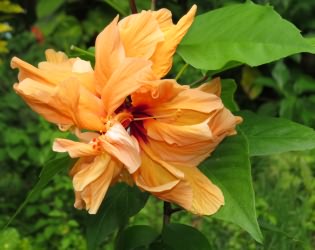
Especially August and September were very dry, so we had to save water despite a large water tank. The garden suffered a lot and only in October, when it rained more than enough, we could plant some veggies. For weeks we had strong winds, the advantage was, that it remained relatively cool for the season until well into November.
Werner had to cut down a huge tree which was too close to the house. After work he often goes kajaking in the lagoon.
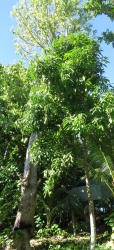 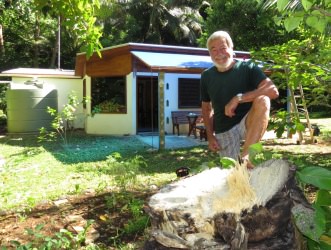 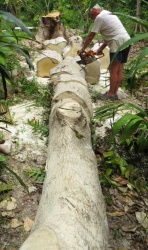 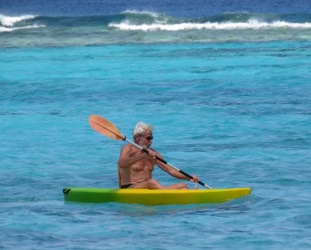
In December tomcat Puki found out, that the mangoes are ripe and Werner climbed up in the trees to harvest them and we cooked jam again. This concluded the annual cycle.
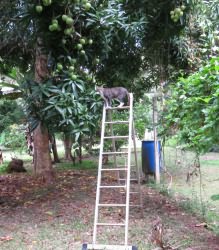  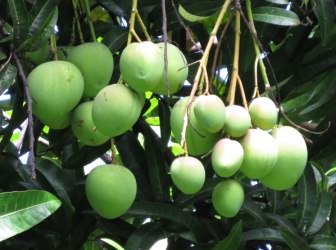 
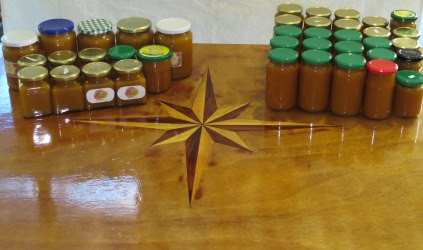
The dining table with the compass rose is one of Werners recent projects.
Next year in late March we will fly to Germany until early September, this time without a major stopover. Probably we'll travel a bit in Europe then.
Until then we enjoy the sunsets on our bench at the beach, looking out at the reef and the ocean with the dormant volcano Late on the horizon.
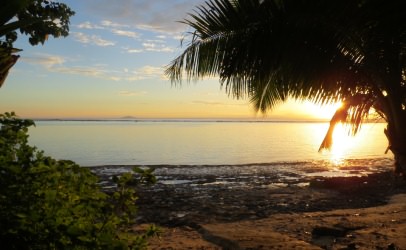 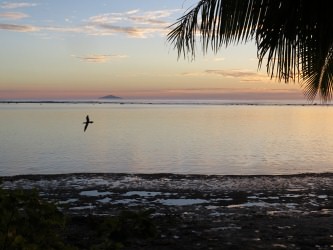 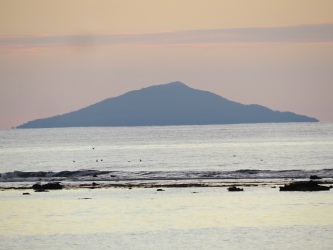
|
 At the end of March, we pulled the boat out of the water and prepared for our departure from Vava'u on Wednesday 11th. The first week of April we had a lot of heavy wind and rain and on the weekend before we left, a cyclone (hurricane) was approaching, supposed to hit Tonga on Tuesday or Wednesday. We had thought with such a late departure there would be no danger anymore, but the weather is going crazy worldwide. In a cyclone, of course, the entire air traffic is cancelled in Tonga. We decided to go to Neiafu early on Monday and try to reschedule the flight to Nuku'alofa for Monday or Tuesday. Boris also had to go to town on Monday morning and we could hitch a ride with him. We went with the open blue boat and it was a wet ride in swimsuit and raincoat, the luggage somewhat protected by large plastic bags and tarpaulins. In
At the end of March, we pulled the boat out of the water and prepared for our departure from Vava'u on Wednesday 11th. The first week of April we had a lot of heavy wind and rain and on the weekend before we left, a cyclone (hurricane) was approaching, supposed to hit Tonga on Tuesday or Wednesday. We had thought with such a late departure there would be no danger anymore, but the weather is going crazy worldwide. In a cyclone, of course, the entire air traffic is cancelled in Tonga. We decided to go to Neiafu early on Monday and try to reschedule the flight to Nuku'alofa for Monday or Tuesday. Boris also had to go to town on Monday morning and we could hitch a ride with him. We went with the open blue boat and it was a wet ride in swimsuit and raincoat, the luggage somewhat protected by large plastic bags and tarpaulins. In 







